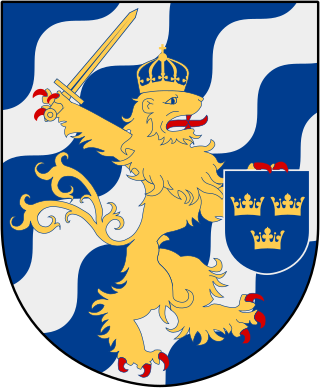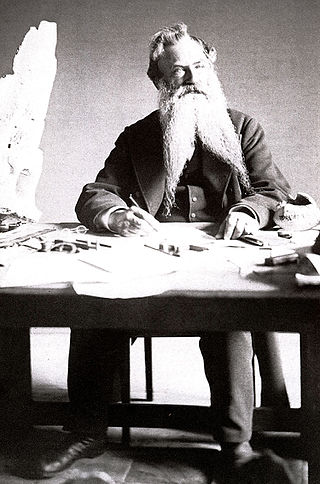
Marstrand is a seaside locality situated in Kungälv Municipality, Västra Götaland County, Sweden. It had 1,320 inhabitants in 2010. The town got its name from its location on the island of Marstrand. Despite its small population, for historical reasons Marstrand is often referred to as a city.

Idrottsföreningen Kamraterna Göteborg, commonly known as IFK Göteborg, IFK or simply Göteborg, is a Swedish professional football club based in Gothenburg. Founded in 1904, it is the only club in the Nordic countries that has won one of the main UEFA competitions, having won the UEFA Cup in both 1982 and 1987. IFK is affiliated with Göteborgs Fotbollförbund and play their home games at Gamla Ullevi. The club colours are blue and white, colours shared both with the sports society which the club originated from, Idrottsföreningen Kamraterna, and with the coat of arms of the city of Gothenburg. The team colours have influenced the historical nickname Blåvitt. The blue and white are in stripes, with blue shorts and socks.
The 1910 season in Swedish football, starting January 1910 and ending December 1910:
The 1923–24 season in Swedish football, starting August 1923 and ending July 1924:
The 1934–35 season in Swedish football, starting August 1934 and ending July 1935:

Jacob Marcus, also called R. Jakob, was a German-Swedish businessman and one of the pioneers in the history of Sweden's Jewish population, which began to take root around the turn of the 18th-19th centuries.

The history ofGothenburg begins with the foundation of the city in 1621, although by that time people had already been living in the area for thousands of years, since the Neolithic Period, and moreover there had already been a series of earlier settlements on the lower Göta Älv, including one which also bore the name Gothenburg.
The 1995 season in Swedish football, starting January 1995 and ending December 1995:
Allsvenskan 2002, part of the 2002 Swedish football season, was the 78th Allsvenskan season played. The first match was played 6 April 2002 and the last match was played 2 November 2002. Djurgårdens IF won the league ahead of runners-up Malmö FF, while IFK Norrköping and Kalmar FF were relegated.
Allsvenskan 2001, part of the 2001 Swedish football season, was the 77th Allsvenskan season played. The first match was played 7 April 2001 and the last match was played 27 October 2001. Hammarby IF won the league ahead of runners-up Djurgårdens IF, while BK Häcken and Trelleborgs FF were relegated.
Allsvenskan 1995, part of the 1995 Swedish football season, was the 71st Allsvenskan season played. IFK Göteborg won the league ahead of runners-up Helsingborgs IF, while Hammarby IF and Västra Frölunda IF were relegated.
Allsvenskan 2000, part of the 2000 Swedish football season, was the 76th Allsvenskan season played. The first match was played 8 April 2000 and the last match was played 4 November 2000. Halmstads BK won the league ahead of runners-up Helsingborgs IF, while GAIS and Västra Frölunda IF were relegated.

August Wilhelm Malm was a Swedish zoologist, entomologist and malacologist. He was the first Director of the Gothenburg Natural History Museum.

Lilla Bommen is a part of Gothenburg harbor used for visiting boats and also the name given to the land surrounding the harbor. The eponymous building along with The Göteborg Opera house and the barque Viking are all located at Lilla Bommen.
The Marstrand Free Port was a largely autonomous island territory of Sweden, during the Gustavian Era of the late 18th century, which effectively functioned as a merchant republic. As a free port designed with inspiration from the Italian porto Franco and declared in 1775 by King Gustav III, it became an urban centre of commerce both legal and illegal, refuge of political and religious dissidents, and hideout of wanted criminals.
Gunhild Kyle was a Swedish historian. She was Sweden's first professor of women's history at the University of Gothenburg.
Adolf Hugo Magnusson was a Swedish naturalist who specialized in lichenology. He was a school teacher in Gothenburg from 1909 to 1948, but spent his spare time on the study of lichens. Magnusson published many monographs and floristic papers, specializing in crustose lichens. He formally described about 900 new taxa, specializing in the genera Lecidea, Lecanora, Caloplaca, and Acarospora.

The Big Three (Clubs) (Swedish: De tre största (klubbarna)) is a phrase used to refer to the three most successful football clubs in Sweden by authors, journalists, club representatives, and supporters. The three clubs AIK from Stockholm, IFK Göteborg from Gothenburg, and Malmö FF from Malmö have a combined 50 out of 119 Swedish championship titles, 30 out of 64 Svenska Cupen titles, and occupy the top three places in the All-time Allsvenskan table.
The 2022 Allsvenskan was the 98th season since its establishment in 1924 of Sweden's top-level football league, Allsvenskan. A total of 16 teams participated. Malmö FF were the defending champions after winning the title in the previous season.

The Torstenson Palace is a building on Södra Hamngatan in Gothenburg, also known as Kungshuset because it was formerly the Swedish king's residence in Gothenburg. It is currently the residence and offices of the landshövding of Västra Götaland County.










